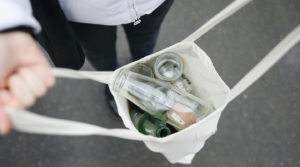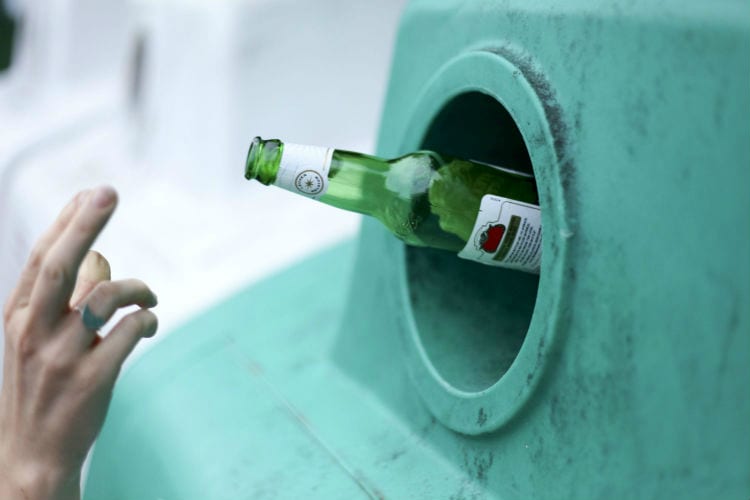Whether it’s collected from your kerbside or you drop it off at a bottle bank, increasing the number of bottles and jars that are collected is vital for glass manufacturers.
But do you know what happens to your glass once you’ve put it in the recycling?
There are some common misconceptions around the glass recycling process and where the glass you recycle eventually ends up, which is where we come in.
The journey of a recycled glass bottle
First things first, glass bottles and jars must make it into the recycling loop, which is where you as the consumer come in.
Across the UK there are differing ways in which glass can be recycled – mainly either in a kerbside collection from your own home or by dropping off your glass bottled in a mixed glass bottle bank (if you’re not sure how you can recycle your glass, you can find out on the Recycle Now website).
Once your glass is in the recycling loop, that’s when the journey to becoming a new glass bottle or jar begins.
The next steps
After the glass is collected, it travels to a Material Recovery Facility (MRF) in order to be separated from other materials, such as plastics, tins and cans, and cleaned so that only glass remains.
The glass is then broken at a cullet processor in order to make recycled glass before being sorted by colour into green, amber and clear before further decontamination.
To be used again in the glass manufacturing process, after processing the cullet will be around 25mm. Glass should not be crushed below 5mm as it cannot be processed and reused.
If the glass doesn’t make it through this process, that’s when the glass is downcycled and made into aggregate to add to concrete and roads (so even the glass that can’t be remade into bottles and jars still has a purpose).
Once back at the glass manufacturers, this recycled glass goes back into the furnace to create new glass bottles and jars just like the ones that were recycled in the first place.
These new glass bottles and jars can be back on supermarket shelves in just 30 days, so within a month your jar of pasta sauce could be living its new life as a bottle of wine or a jar of jam.
The targets
Because glass is 100% recyclable it’s the perfect packaging material for a circular economy, but we need to both collect more and recycle more glass.
This is where FEVE’s close the glass loop campaign comes in.
The initiative is aiming to increase both the quantity and quality of available recycled glass and that starts with improving the average EU collection rate to 90%.
Currently, the recycling rate in the UK is around 67%, but we can be better, and it all starts with you recycling your bottles and jars however you can.





